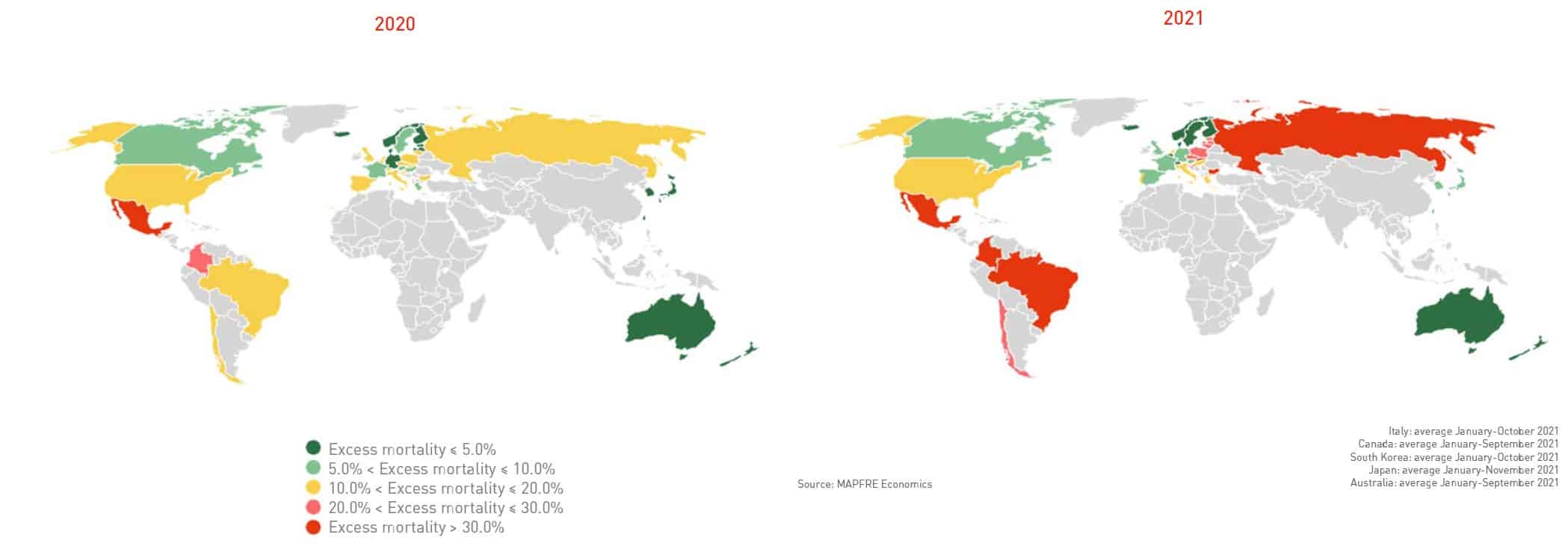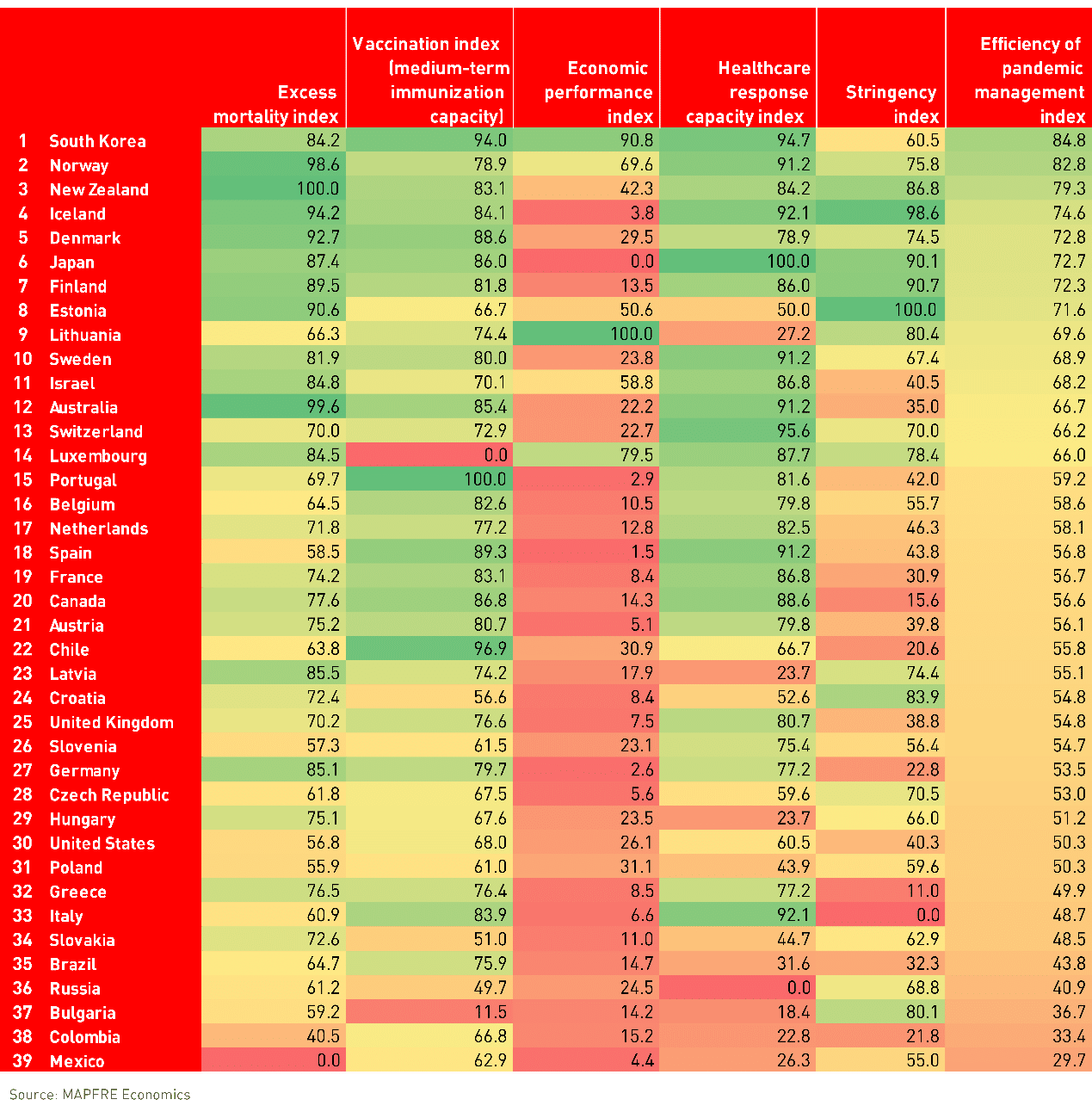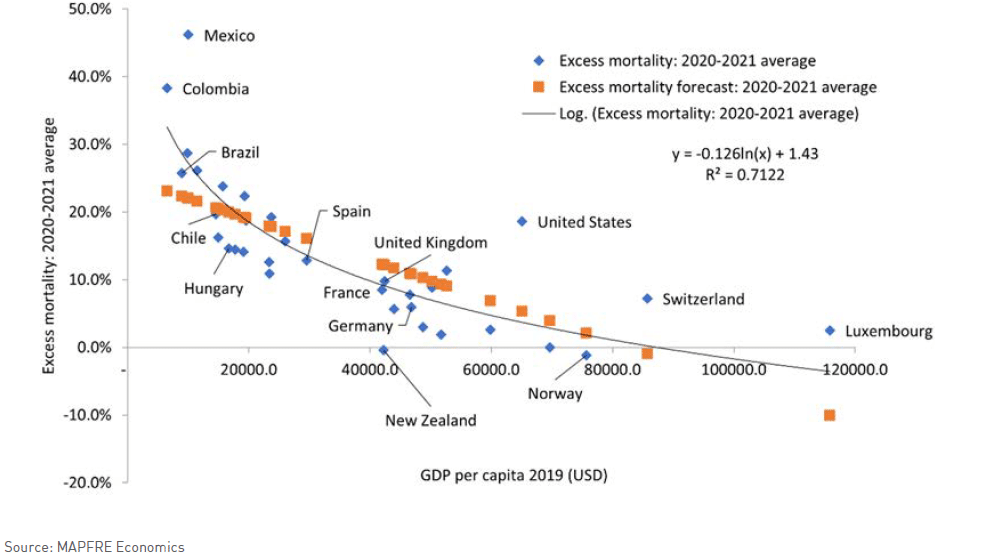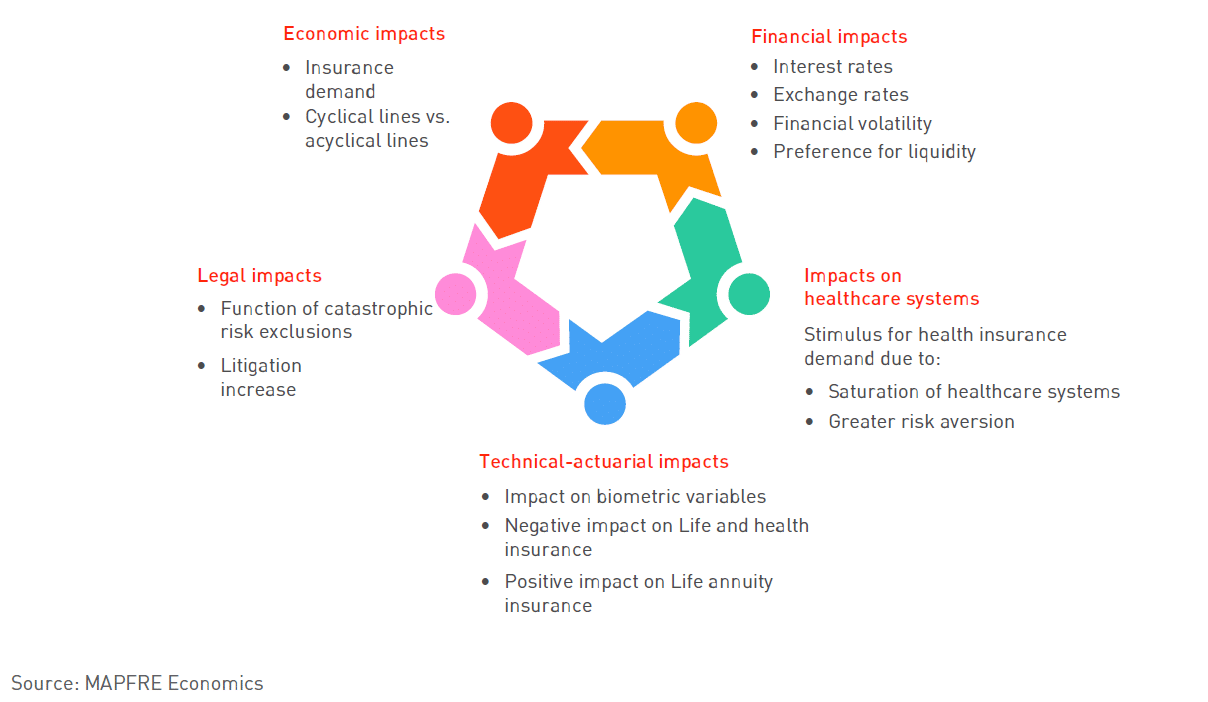Excess mortality, pandemic management, and insurance industry impacts
In addition, insurers’ efforts to remain operational during lockdowns have accelerated digitization processes, ensuring that underwriting and customer service were not paralyzed and speeding up plans to invest in technological resources and profiles.
At the following link, you can find the study COVID-19: a preliminary analysis of demographic and insurance industry impacts, by MAPFRE Economics, which takes a closer look at excess mortality and the pandemic’s effects on life expectancy and the insurance industry.







